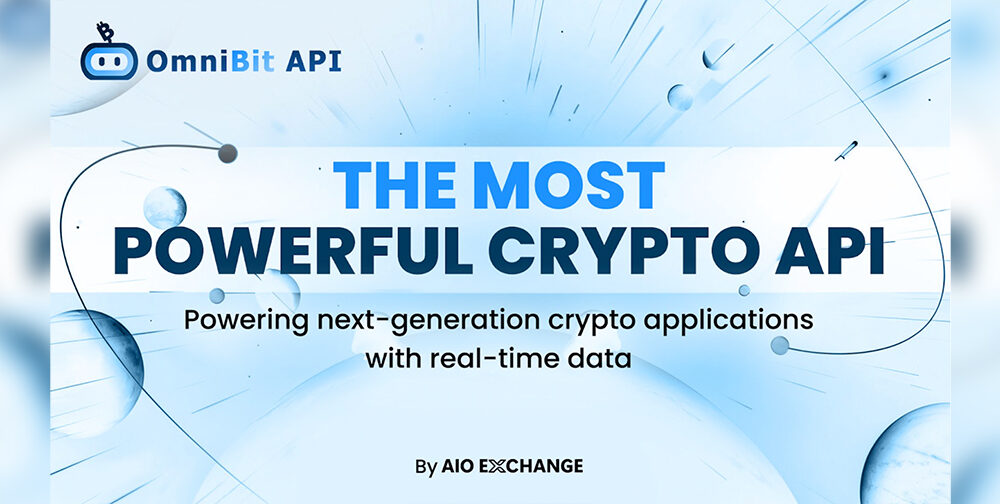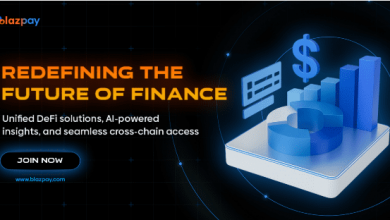How to Connect to Ethereum, Solana, Tron & Other Blockchains in Under 15 Minutes

A Step-by-Step Guide for Developers Building Multi-Chain Crypto Apps
In today’s fast-paced blockchain world, building a crypto application that seamlessly interacts with multiple networks shouldn’t take hours or require juggling endless APIs. With OmniBit API, you can power up your project with Ethereum, Solana, Tron, and over 20 other chains in a flash. This guide walks you through the process with an engaging, concise, and developer-focused approach.
- Choosing the Right API and Obtaining Your Key
When selecting an API, some key requirements include:
– Aggregated Data: Seamless access to multiple blockchains and exchanges in one place.
– Up-to-Date Mapping: Real-time token and contract mapping beyond traditional aggregators.
– Low Latency: Fast, reliable responses for efficient workflows.
OmniBit API addresses all these needs with a single, high-performance solution. It integrates over 20 blockchains and both centralized and decentralized exchanges, all featuring comprehensive token mappings.
Getting started is easy:
– Create an Account: Sign up quickly at https://omnibit.aio.exchange.
– Generate Your API Key: Instantly unlock access to aggregated, real-time blockchain data through your account dashboard.
– Start Building: Rapidly integrate and scale your multi-chain crypto application within minutes, not hours.
For a detailed overview and to compare OmniBit with other available options such, check out the comparison page.
2. Explore Supported Networks
Curious about which networks you can tap into? Use the following endpoint to retrieve a list of available blockchains:
Endpoint:
GET /v1/blockchain/networks
Response Example:
{
“data”: [
{ “network”: “ETH”, “description”: “Ethereum”… },
{ “network”: “SOL”, “description”: “Solana””… },
{ “network”: “TRX”, “description”: “Tron””… }
// … additional networks
],
..
}
This simple call gives you all the necessary network identifiers for subsequent requests, keeping your multi-chain support as streamlined as possible.
At the time of writing, the following networks support abstraction under a single endpoint:
Ethereum, Binance Smart Chain, Polygon, Avalanche C-Chain, Solana, TRON, Bitcoin Segwit, Bitcoin, Bitcoin Cash, Litecoin, Litecoin Segwit, Ripple, Sonic, Optimism, Mantle, HTX Eco Chain, Flare, Filecoin, Chiliz, Celo.
3. Choose Your Tokens with Confidence
Token symbols can be ambiguous—imagine one token symbol, like HOT, representing multiple contracts across different exchanges. OmniBit API lets you bypass this headache by allowing contract-address queries that accurately map to token symbols. For a quick demo, use this endpoint:
Example Request:
GET /v1/tokeninformation/symbols/SOL
Example Response:
{
“data”: {
“tokenId”: 38105,
“name”: “Solana”,
“symbol”: “SOL”,
“marketCap”: 68434965207.68254,
“description”: “Solana (SOL) is a cryptocurrency launched in 2020…”,
“logoURL”: “https://source1.com/token/img/32×32/solana.png”,
“website”: “https://solana.com”,
“rank”: 6,
“dilutedMarketCap”: 83260303222.58763,
“aioConnectedExchanges”: 12,
“networks”: [
{
“network”: “SPL”,
“networkName”: “Solana”,
“contractAddress”: “SOLANA”,
“isAvailable”: true
}
],
“isFiat”: false
},
…
}
This endpoint ensures that your application supports the right tokens with precision.
4. Get Transaction Details in a Snap
With OmniBit API’s standardized transaction endpoint, fetching details about transfers, native coins, or NFTs is straightforward. One universal call works across networks.
Example Request:
GET /v1/blockchain/transactioninfo/ERC20/0x8f1191513d568aba769063985ace4b2acce621bd90a41a02f7cf956937da9f28
Example Response:
{
“data”: {
“transactionId”: “0x8f1191513d568aba769063985ace4b2acce621bd90a41a02f7cf956937da9f28”,
“network”: “ERC20”,
“fee”: 0.0000411846999984,
“feeSymbol”: “ETH”,
“feeTokenId”: 7312,
“status”: “CONFIRMED”,
“confirmations”: 311722,
“blockNumber”: 21820786,
“blockHash”: “0xbebb9ea682c3d32b0526331cfd419b7f4c07a0e5966896428e0955f24e1f45d3”,
“timestamp”: 1739246807000,
“transfers”: [
{
“fromAddress”: “0x294ab63f30c53f970da1d02668ef14ca3d17b6ce”,
“toAddress”: “0xa902ab3c5bd69198066b1e895eafa85ae409282e”,
“amount”: 0.0100000002,
“tokenSymbol”: “ETH”,
“tokenId”: 7312,
“contractAddress”: “ETHEREUM”,
“transferType”: “NATIVE”
}
]
},
…
}
This unified format means you don’t need to write separate logic for each blockchain.
5. Retrieve Balances Effortlessly
Querying a blockchain address balance is as simple as making a GET request. For instance, check an Ethereum address with:
Endpoint for Ethereum:
GET /v1/blockchain/balance/ETH/0xYourEthereumAddress
You can also fine-tune your call with parameters like tokenId, symbol, or contractAddress for specific ERC20 tokens.
Response Example:
{
“data”: {
“network”: “ETH”,
“symbol”: “ETH”,
“balance”: 12.34567,
“contractAddress”: “ETHEREUM”,
“walletAddress”: “0xYourEthereumAddress”
}
…
}
This endpoint’s simplicity means you can easily check balances across Ethereum, Solana, Tron, and other chains without additional fuss.
6. Expand to Any Chain
The consistent design of OmniBit API ensures that the same principles apply no matter which blockchain you target. Want to check a Solana wallet? Just call:
GET /v1/blockchain/balance/SOL/{solanaAddress}
Or for Tron:
GET /v1/blockchain/balance/TRX/{tronAddress}
The uniformity in response makes scaling your application across blockchains as smooth as possible.
7. Integrate with Minimal Code
Below is a quick Node.js snippet to demonstrate how to fetch a balance using the OmniBit API:
const fetch = require(‘node-fetch’);
async function getBlockchainBalance(network, address, apiKey) {
const url = `https://omnibit1.aio.exchange/v1/blockchain/balance/${network}/${address}`;
const response = await fetch(url, {
method: ‘GET’,
headers: {
‘X-OMNI-API-KEY’: apiKey
}
});
const data = await response.json();
if (data.success) {
console.log(`Balance for ${address} on ${network}:`, data.data.balance);
} else {
console.error(`Error: ${data.message}`);
}
}
// Example usage:
getBlockchainBalance(‘ETH’, ‘0xYourEthereumAddress’, ‘YOUR_API_KEY_HERE’);
This code snippet showcases how easily you can integrate and get up and running in minutes.
Keep On Building
With OmniBit API’s high-frequency, low-latency infrastructure, you’re empowered to build sophisticated, multi-chain crypto applications without getting bogged down by the details. Ready to go further? Now explore arbitrage opportunities, unified exchange orderbooks, or historical market insights in seconds with the OmniBit API docs.
Ready to go further? Now explore arbitrage opportunities, unified exchange orderbooks, or historical market insights in seconds with the OmniBit API docs.

Source: How to Connect to Ethereum, Solana, Tron & Other Blockchains in Under 15 Minutes



